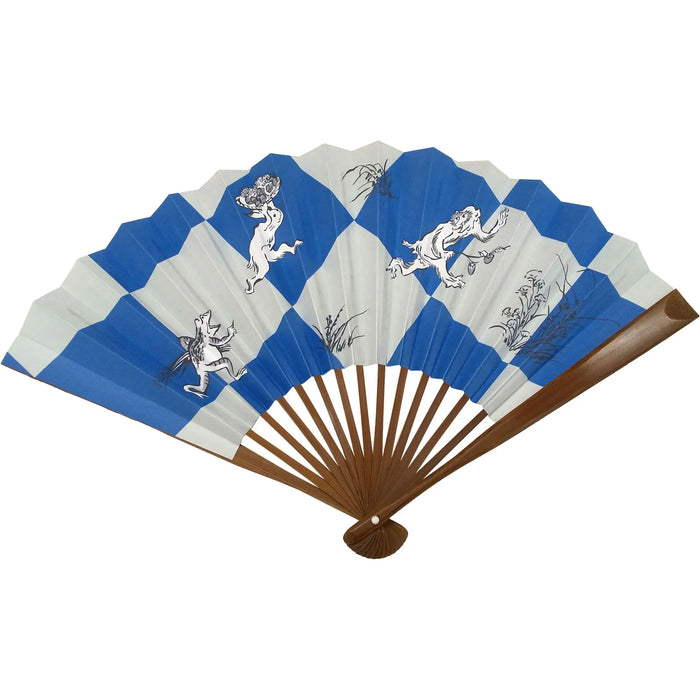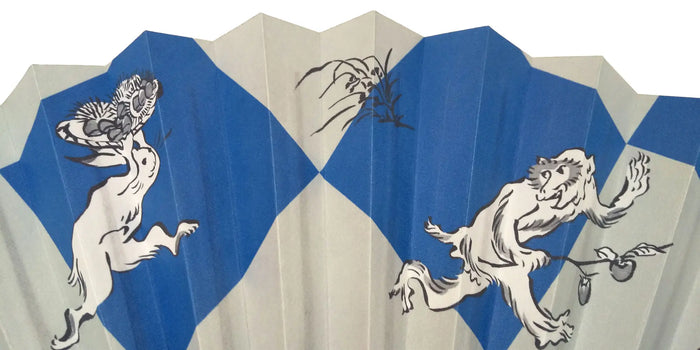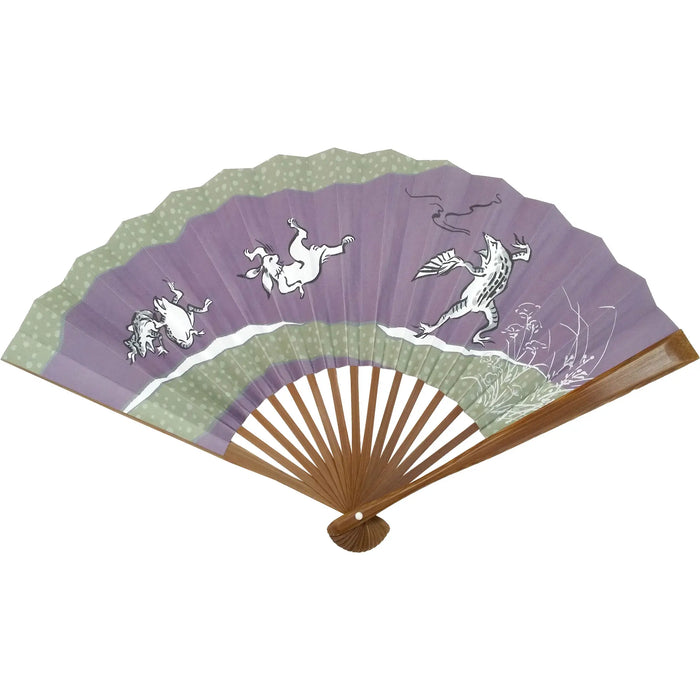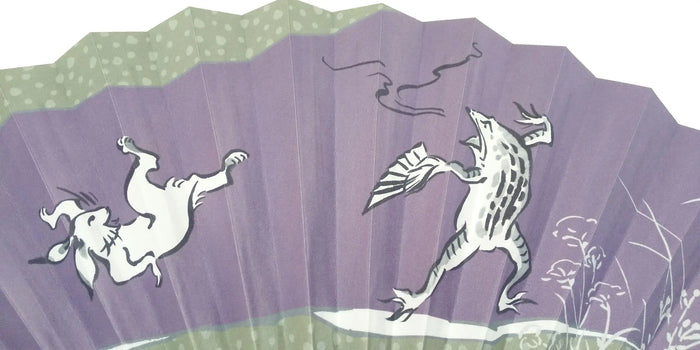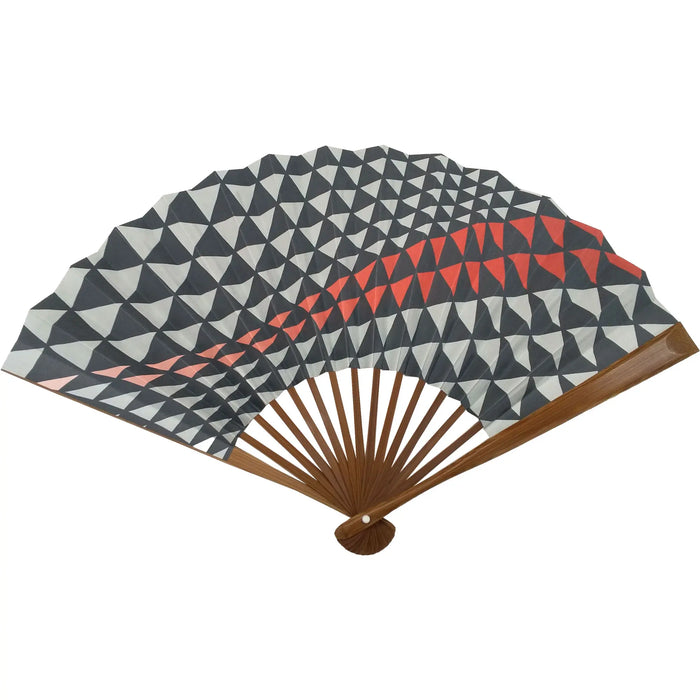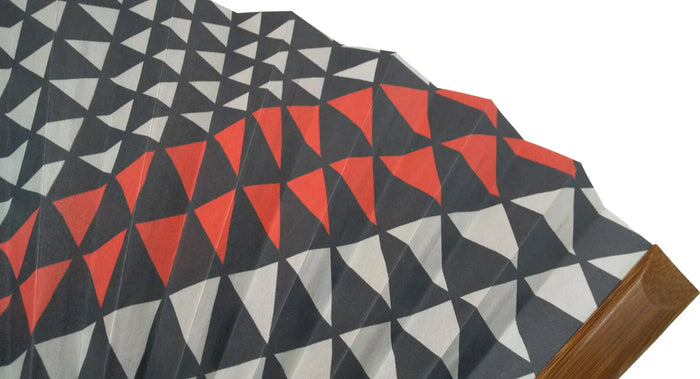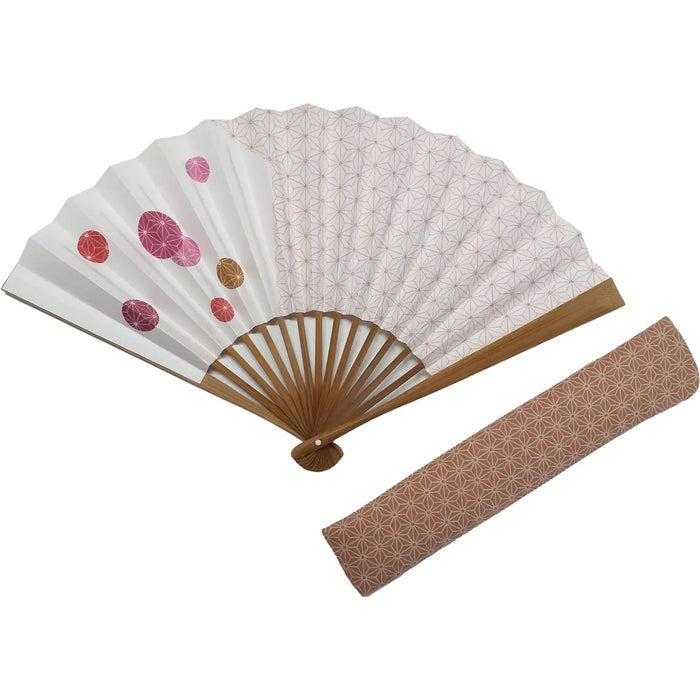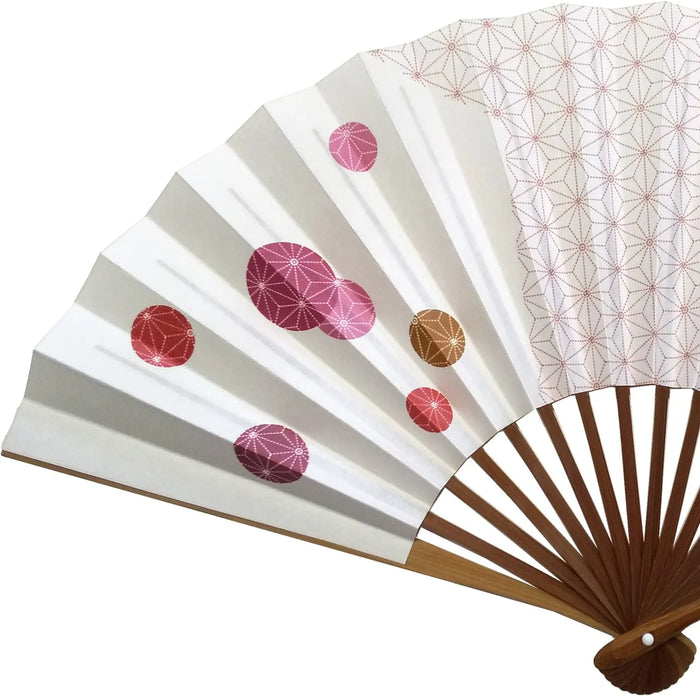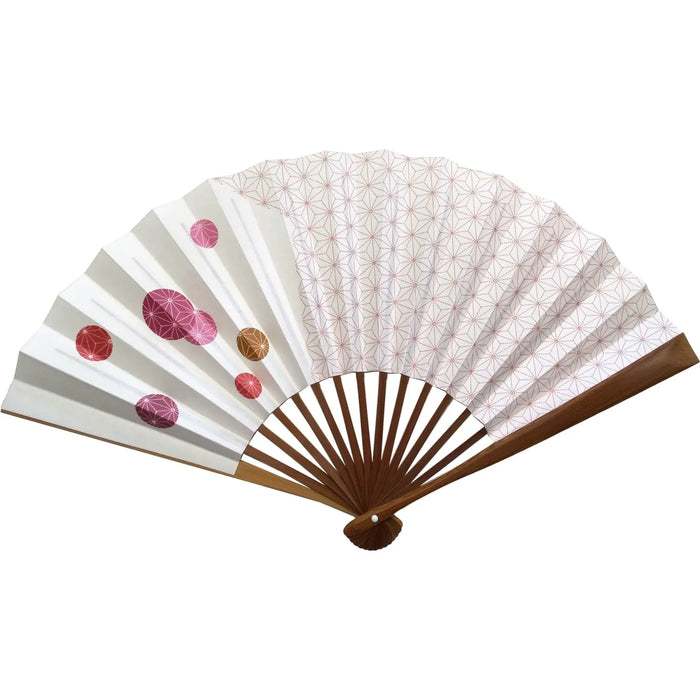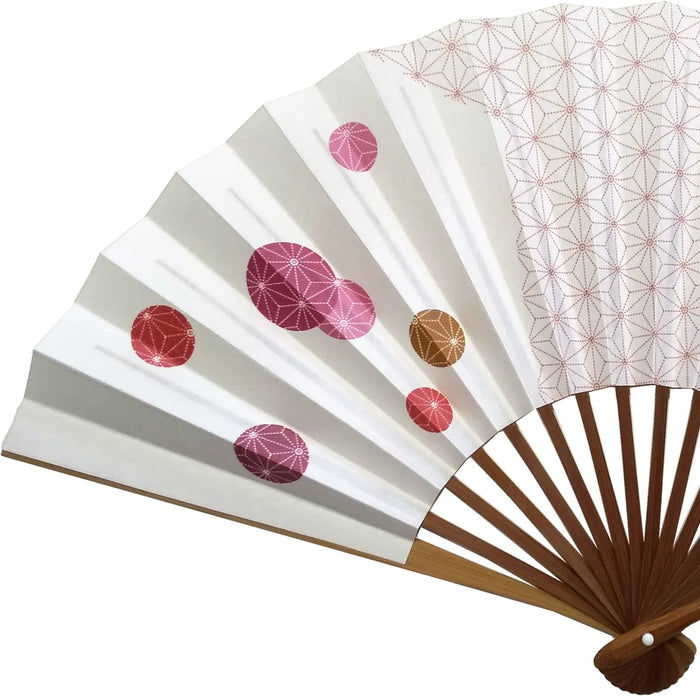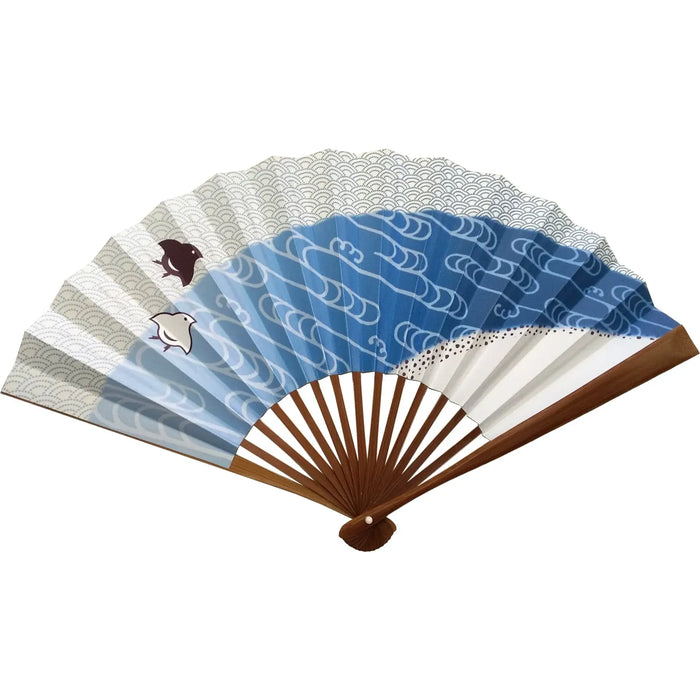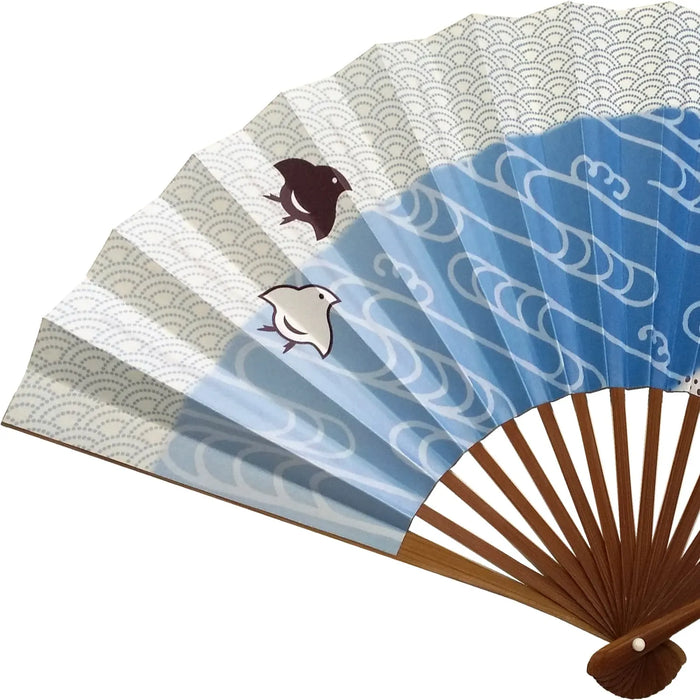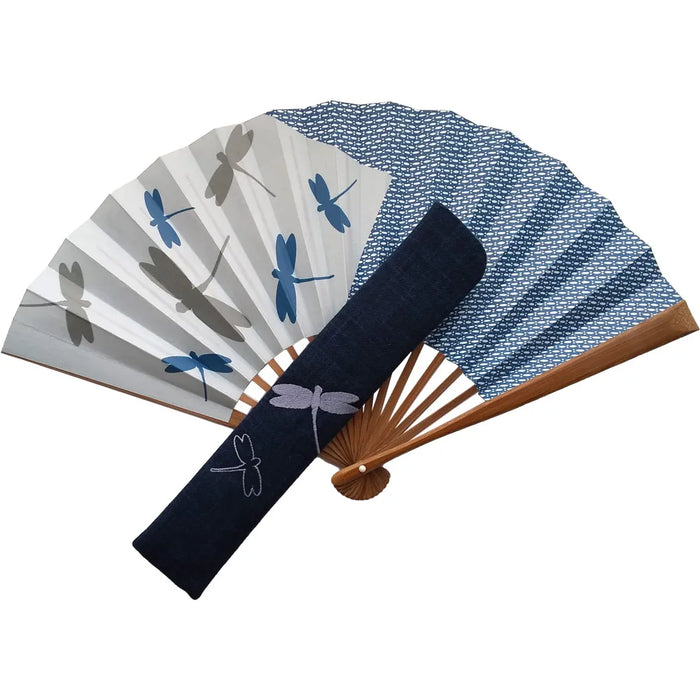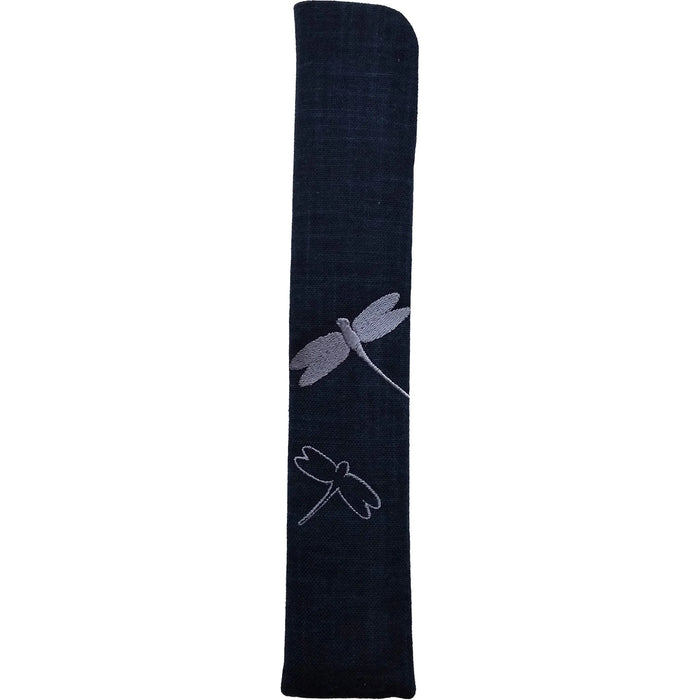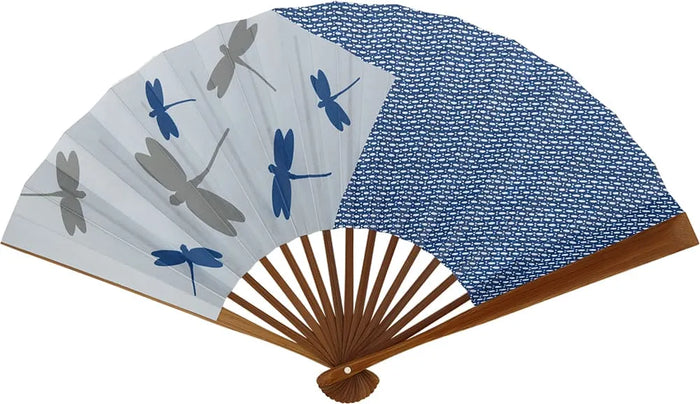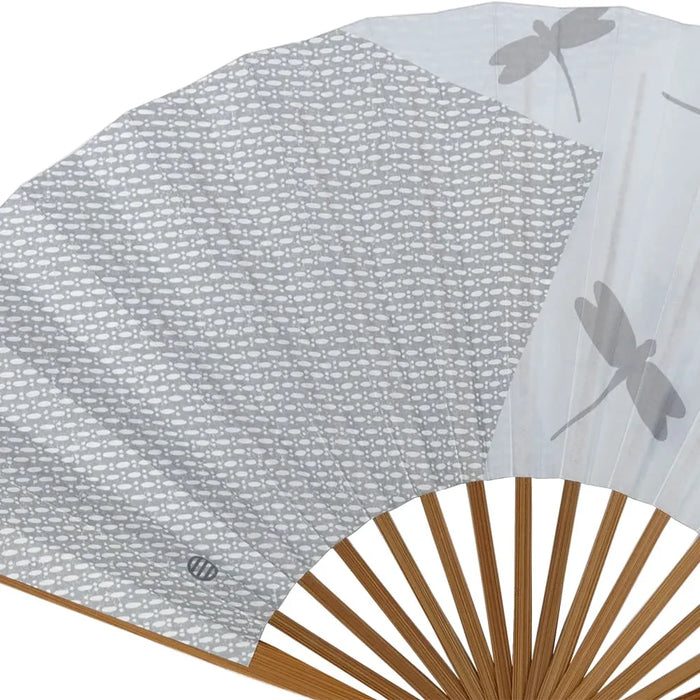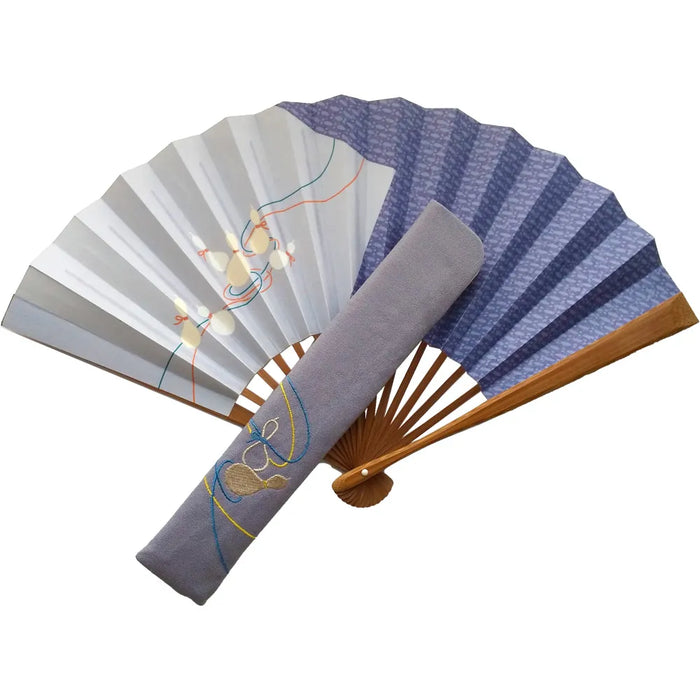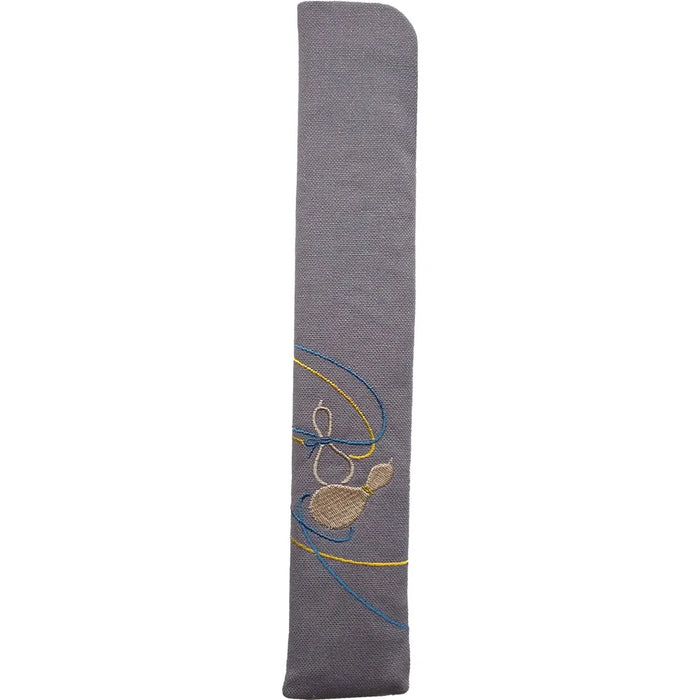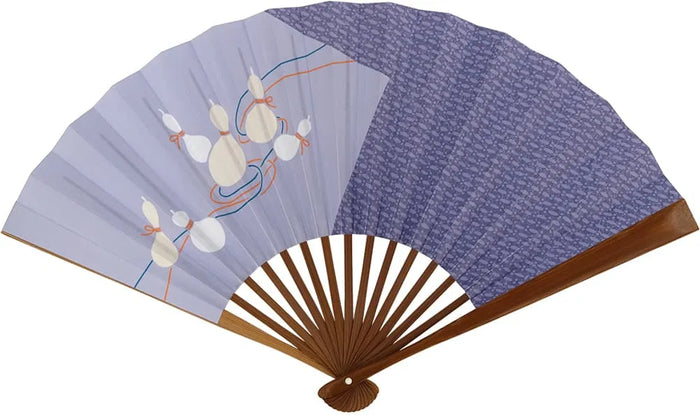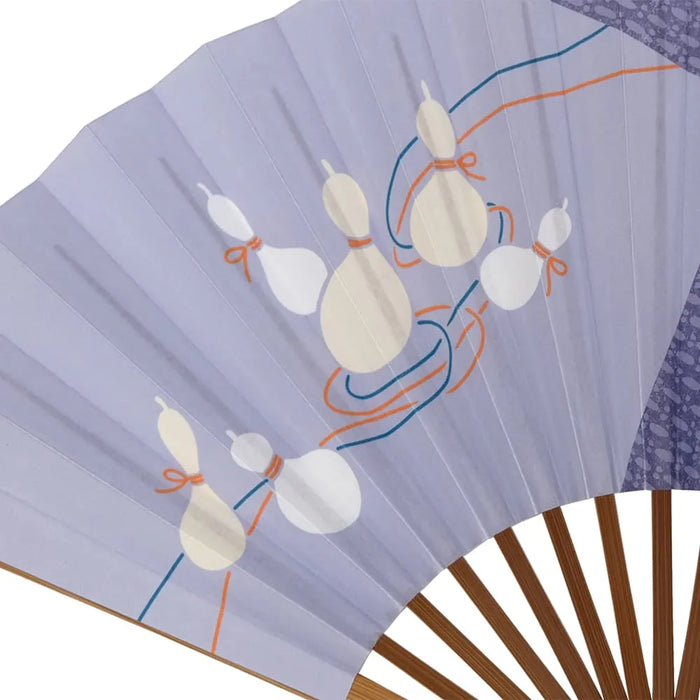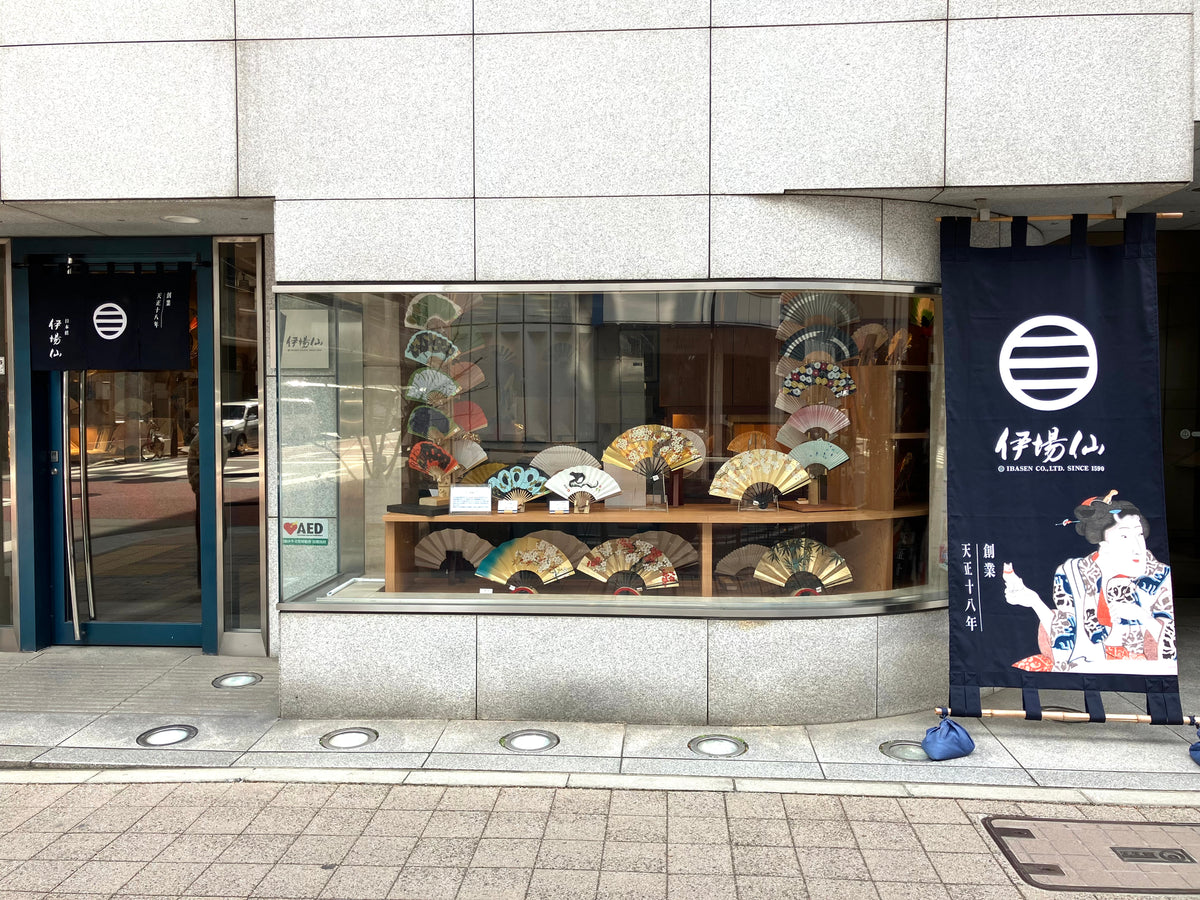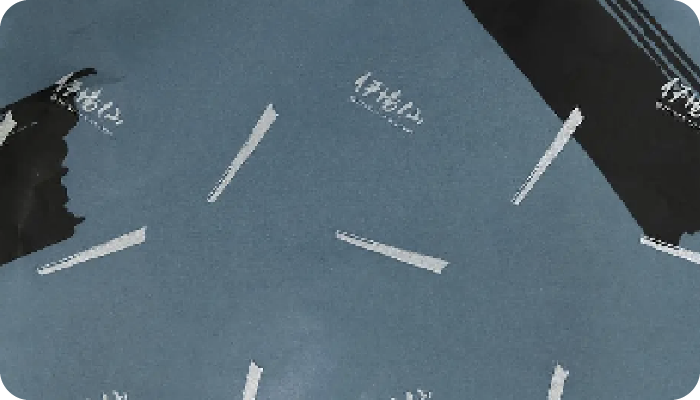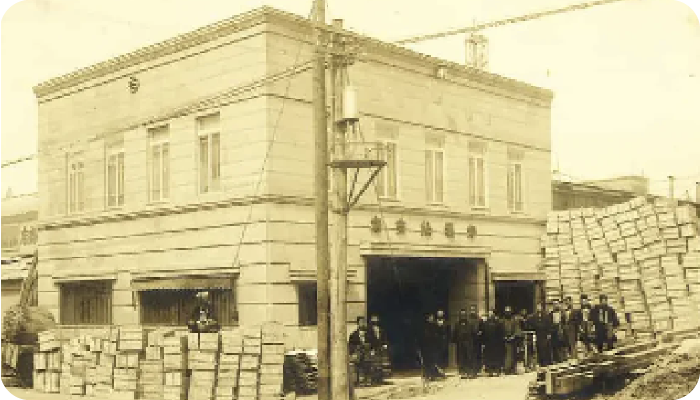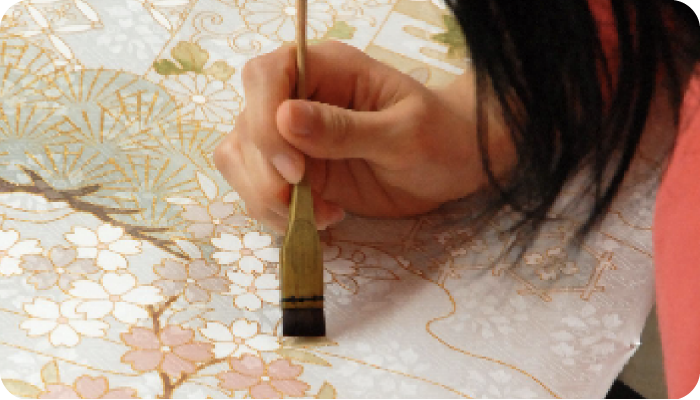folding fanVarious patterns of
Auspicious Designs
A design depicting an object that is considered auspicious.
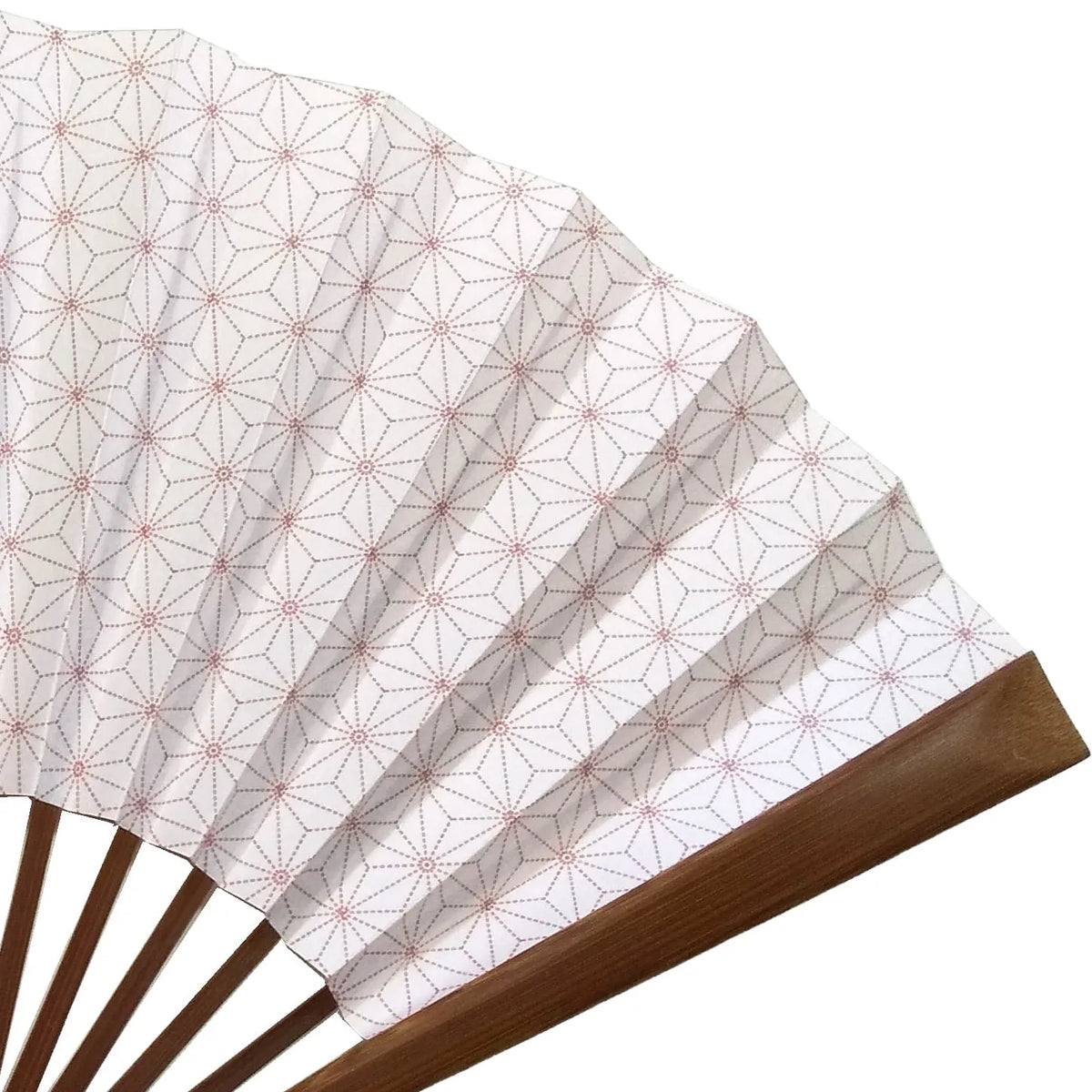
Asano-ha deisignpattern
Asano-ha deisignis so fast growing that it can reach 4 meters in 4 months, and since it grows straight up and up and up, it is a wish for the healthy growth of the child.
In addition, the "Asano-ha deisignpattern has a meaning of repelling evil and has been widely used as a pattern for maternity clothes since olden times.
Nami Chidori
The "Nami Chidori" pattern, depicted with waves and water, is considered an auspicious pattern for marital bliss and family safety, as it represents the metaphor of the world between waves and means "overcoming stormy seas together".
Chidori" also has the meaning of "winning luck" and "achieving one's goals" because of the logo combination of "Chidori" and "Chidori".
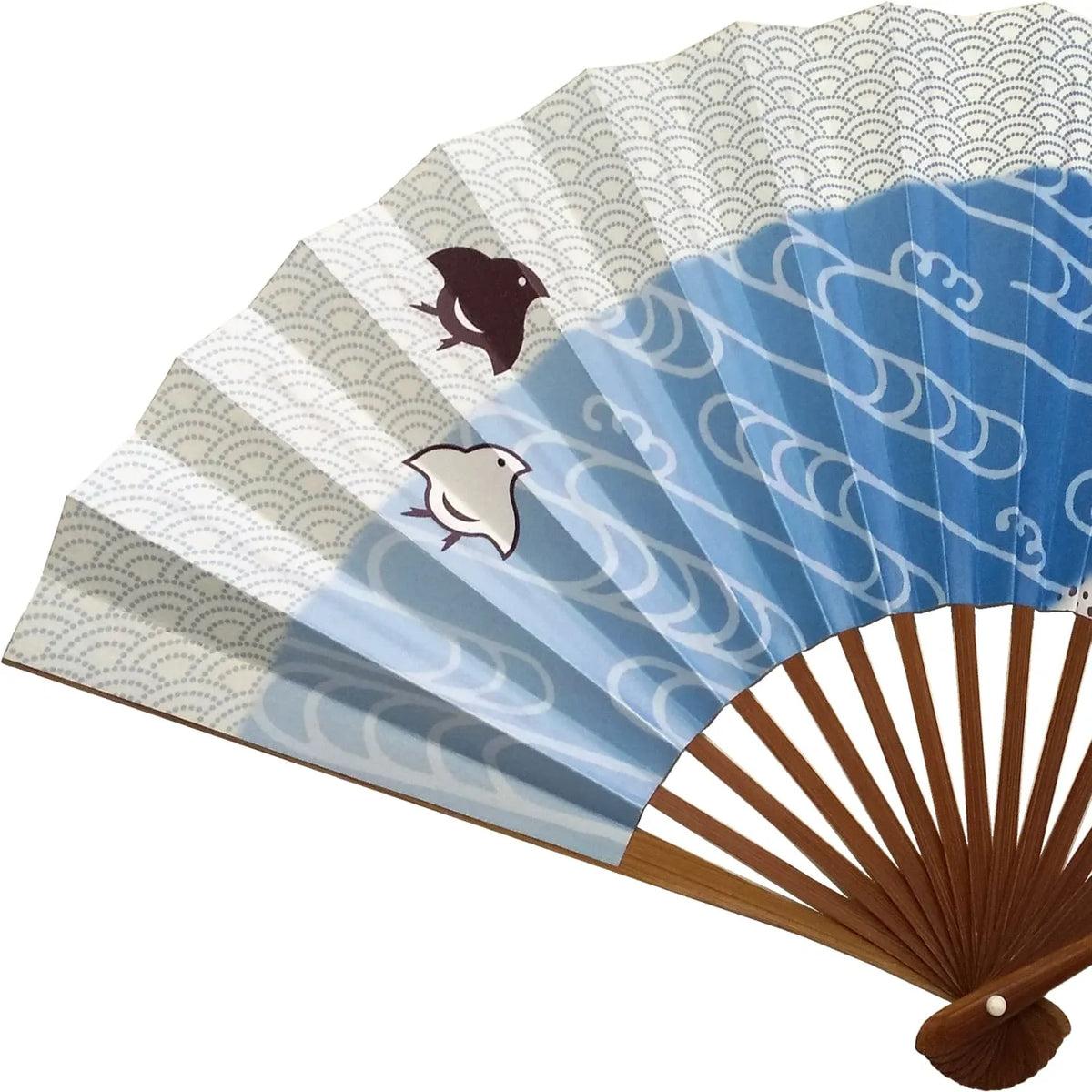
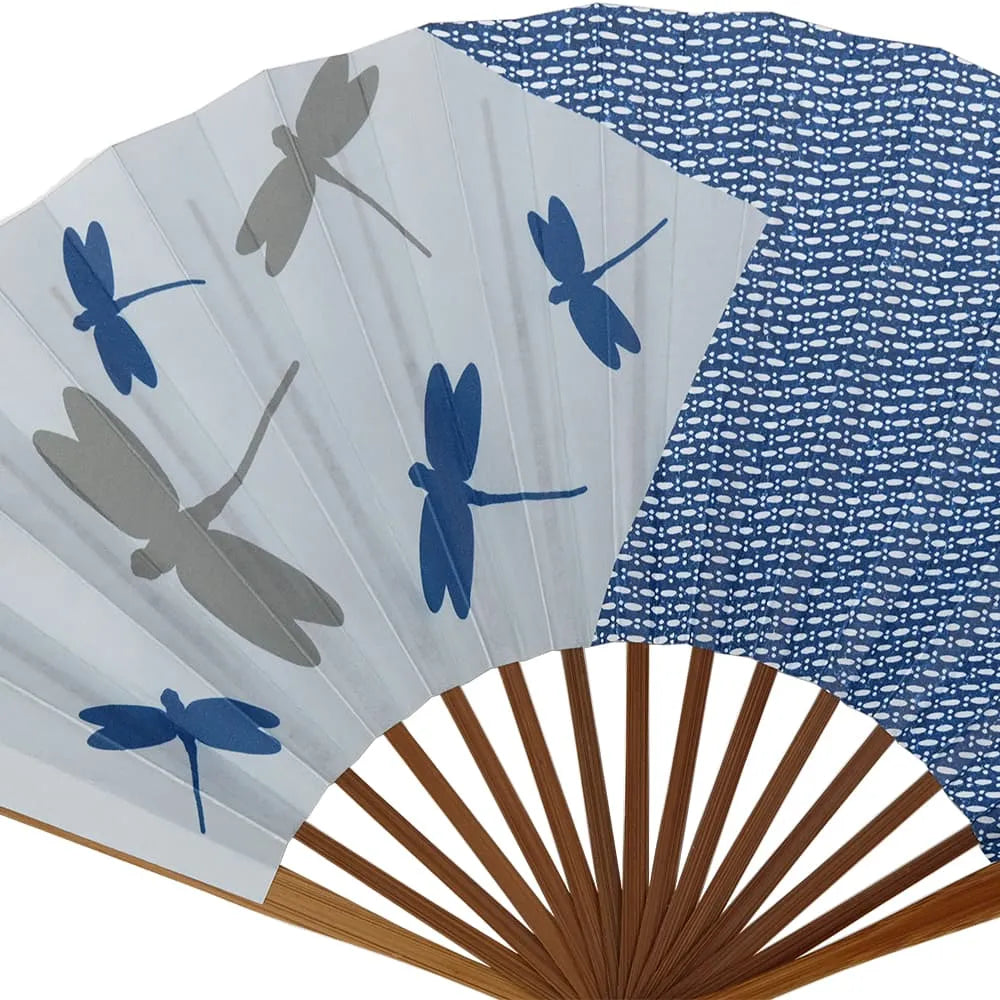
Dragonfly
Dragonflies are valuable beneficial insects that get rid of pests and symbolize a good harvest.
Dragonflies were also called "victory bugs" or "shogun bugs" because they flew quickly through the air to catch insects, and were favored by warriors.
Whirling dragonfly" combined with Kanze-sui pattern
Dragonflies, a favorite motif of samurai warriors for their armors because they are called "victorious insects" and fly only forward, and the Kanze-sui pattern, characterized by swirls of water representing infinity, are combined in this auspicious design, which suggests "victory will continue without end.
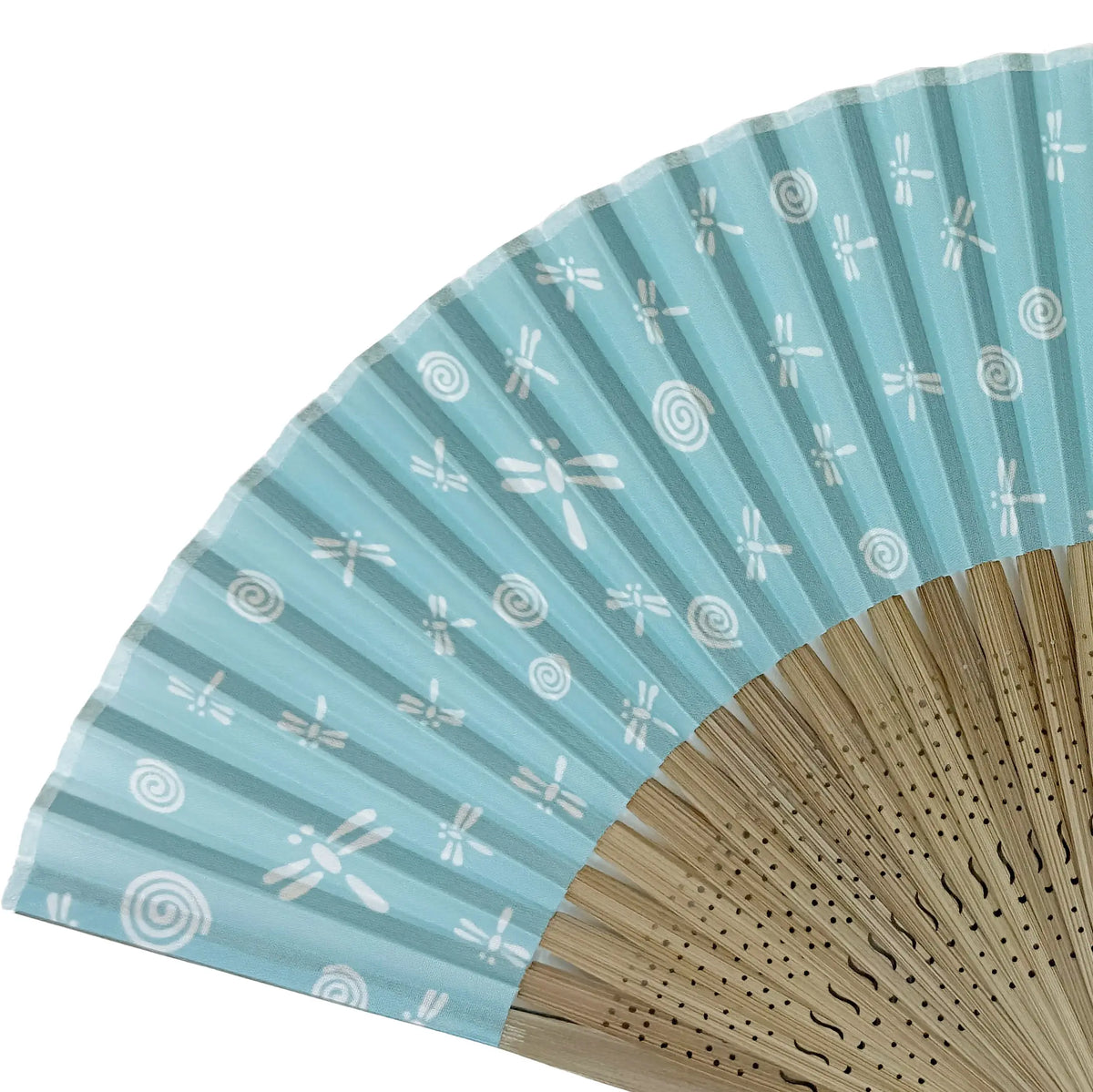
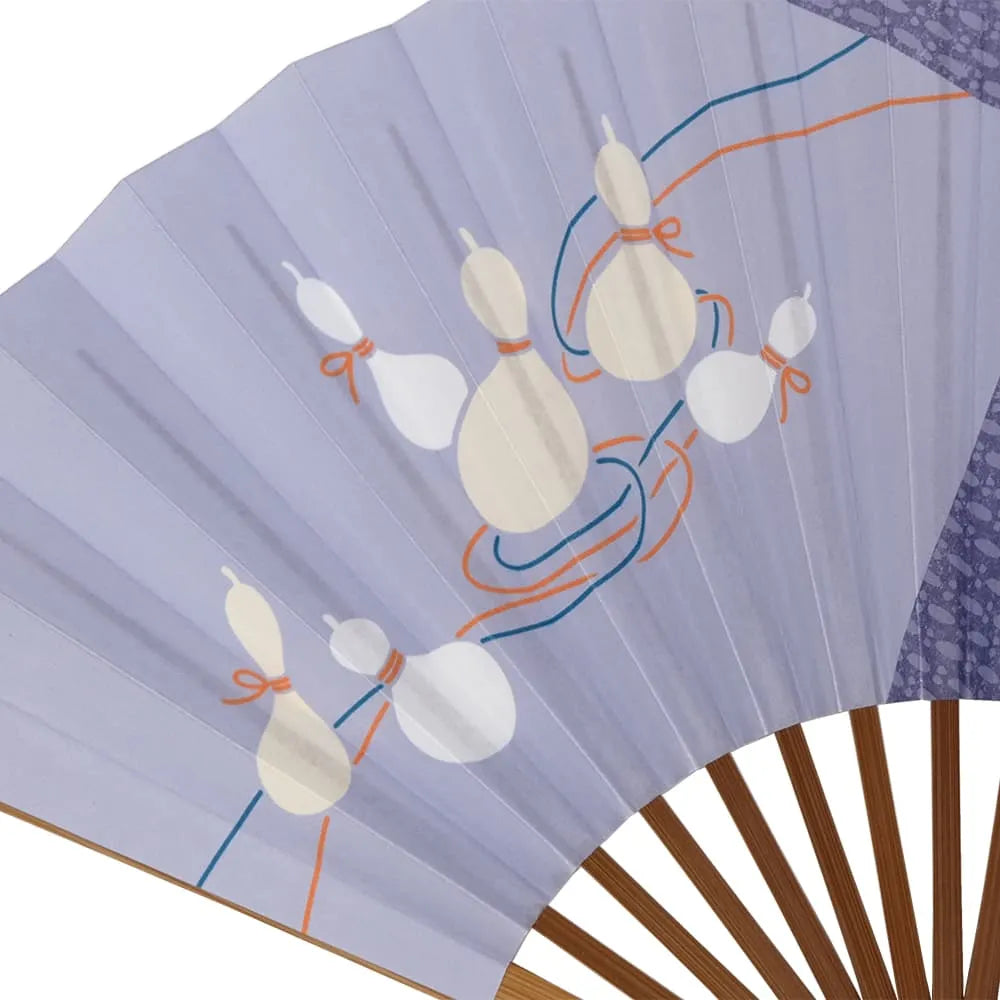
Hyotan (gourd) pattern
Gourds bear many fruits, which are believed to bring prosperity to offspring, good fortune, prosperous business, and good health.
The six gourds are also meant to ward off evil spirits, and the shape of the gourd is meant to absorb them and keep them at bay. Gourds are also called "Senjo Gourds," which means "thousand gourds," and are a pattern of good luck, as it is said that one's wishes will be fulfilled.
Checkered pattern
The image of never-ending, everlasting, and expansive pattern is considered to signify eternity, development and expansion, and prosperity.
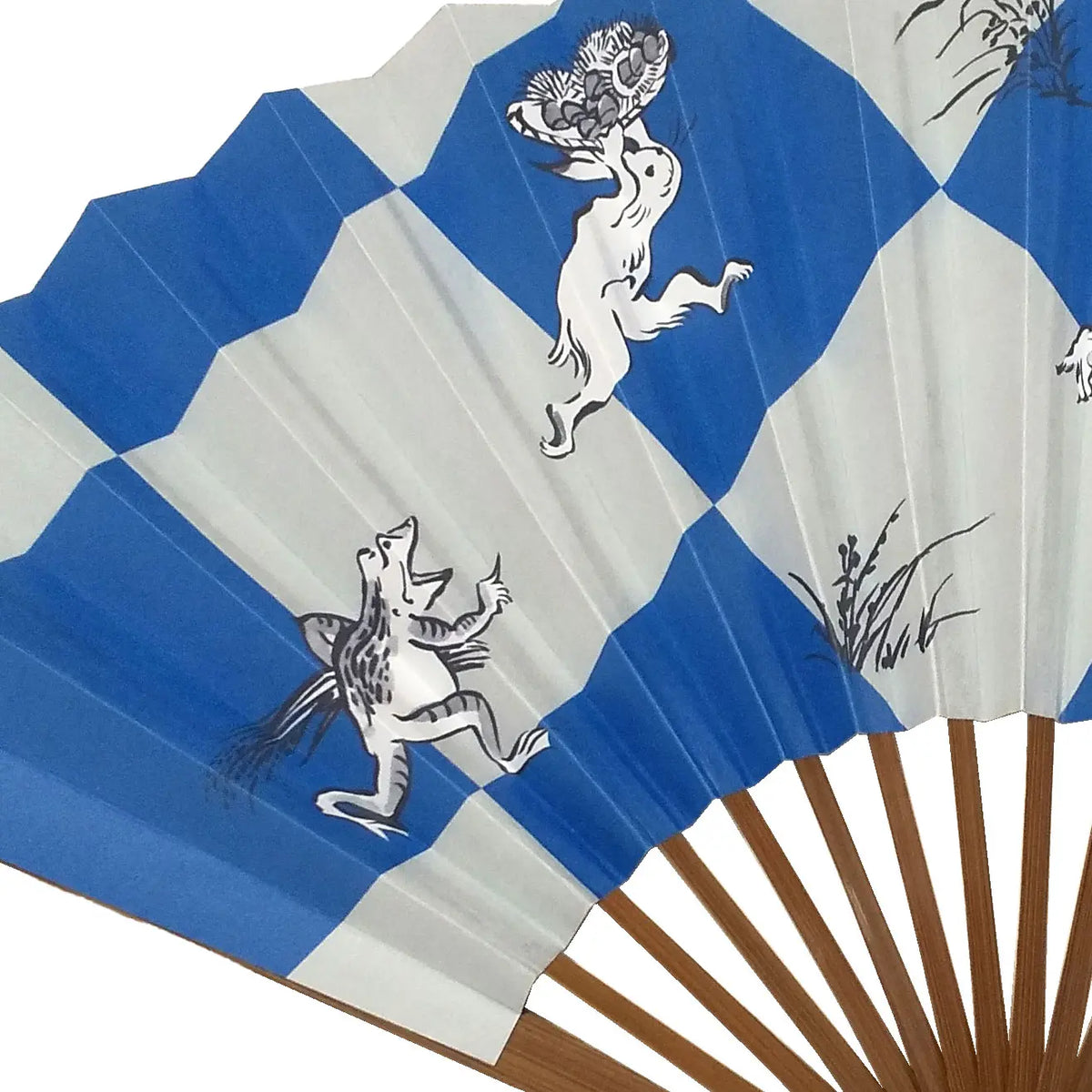
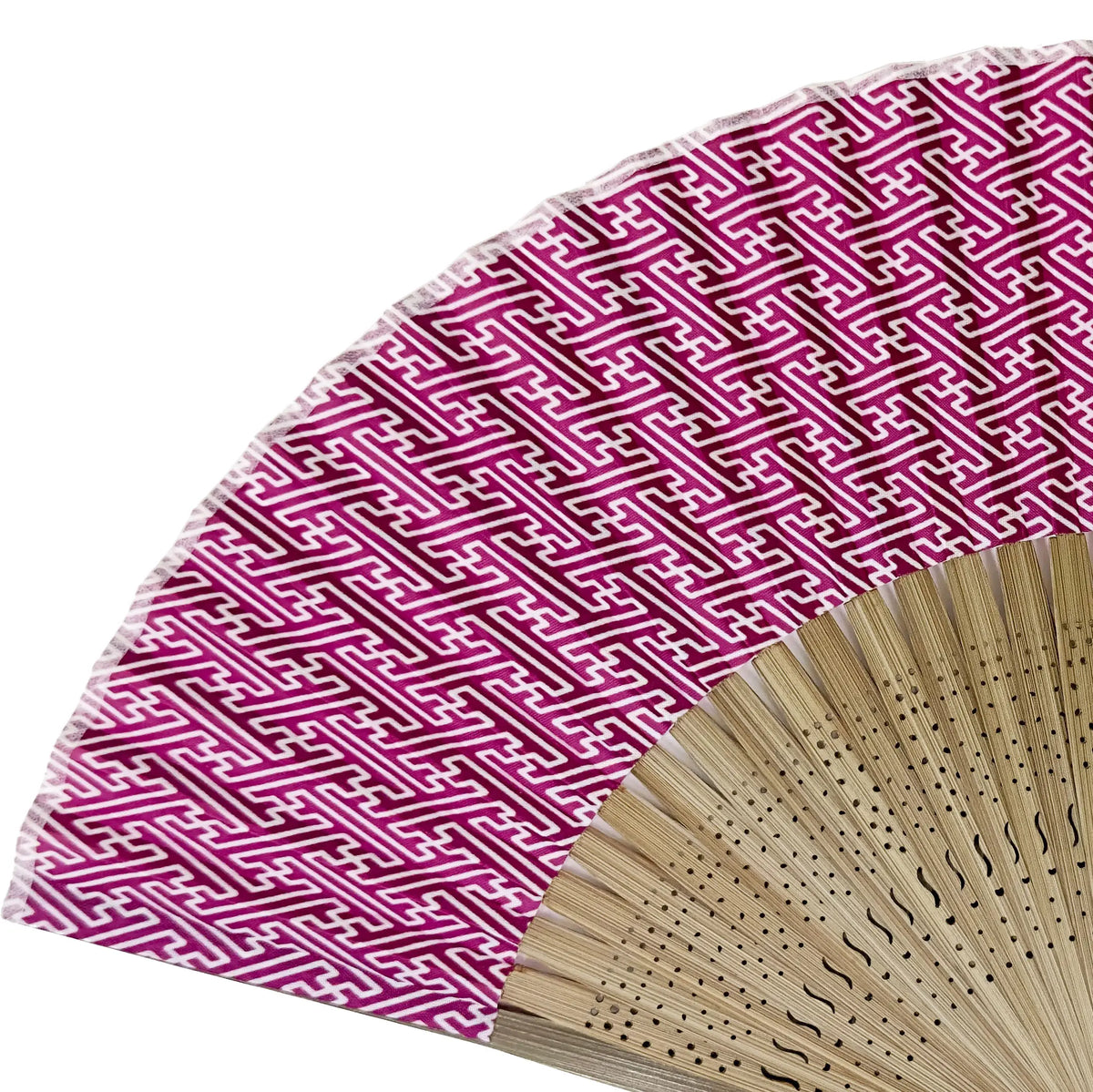
Gauze pattern
This pattern is made by breaking up the kanji character for "manji" into naname (naname) and connecting them. Some people believe that the kanji "man" was formed by changing the character "manji," and the pattern representing a large number is connected in any direction, which is thought to have the meaning of "fudan chokyu," a wish for prosperity and longevity of the family.
Blue sea wave
The pattern of gentle waves that continue forever is meant to express the wish that life will continue to be peaceful and tranquil for many years to come.
It is also an auspicious pattern that brings good luck.
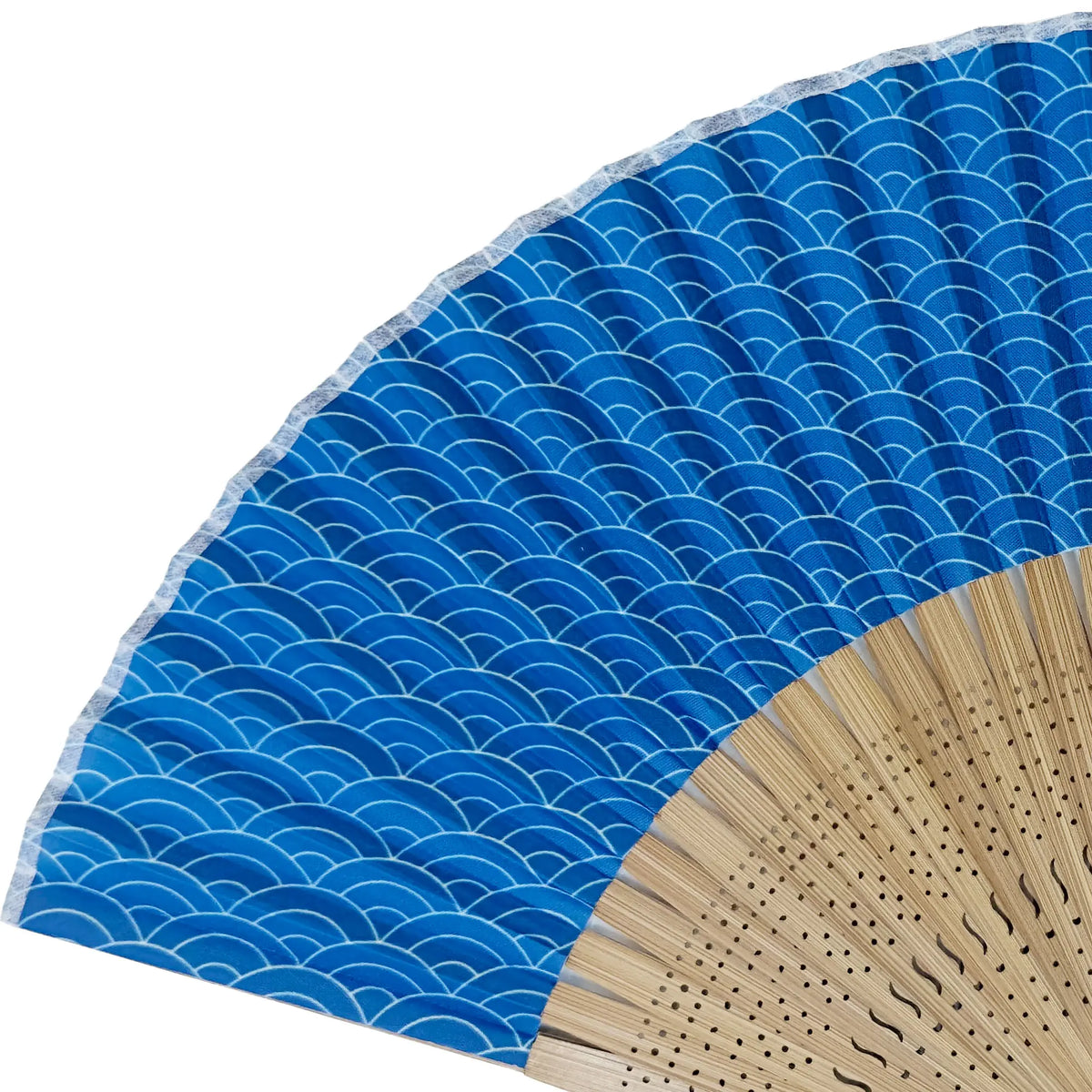
[New in 2024Edo fan No.37 Birds, beasts and caricatures, large harvest
- Regular
- ¥9,350
- Sale
- ¥9,350
- Regular
-
- Unit Price
- per
[New in 2024Edo fan No.36 Birds, beasts and caricatures, big smile
- Regular
- ¥9,350
- Sale
- ¥9,350
- Regular
-
- Unit Price
- per
Edo fan No.34 Scales, red
- Regular
- ¥9,350
- Sale
- ¥9,350
- Regular
-
- Unit Price
- per
Edo fanSet No.30Asano-ha deisignBall, light red, in paper box
- Regular
- ¥11,330
- Sale
- ¥11,330
- Regular
-
- Unit Price
- per
Edo fan No.30Asano-ha deisignBall, light red
- Regular
- ¥9,350
- Sale
- ¥9,350
- Regular
-
- Unit Price
- per
Edo fan No.29 Double-sided Pattern Nami Chidori Blue sea wave
- Regular
- ¥9,350
- Sale
- ¥9,350
- Regular
-
- Unit Price
- per
Edo fanSet Dragonfly Blue No.24
- Regular
- ¥11,330
- Sale
- ¥11,330
- Regular
-
- Unit Price
- per
Edo fan No.24 Double-sided dragonfly, blue
- Regular
- ¥9,350
- Sale
- ¥9,350
- Regular
-
- Unit Price
- per
Edo fanSet of six gourds (mb) No.11
- Regular
- ¥11,330
- Sale
- ¥11,330
- Regular
-
- Unit Price
- per
Edo fan No.11 Six gourds
- Regular
- ¥9,350
- Sale
- ¥9,350
- Regular
-
- Unit Price
- per
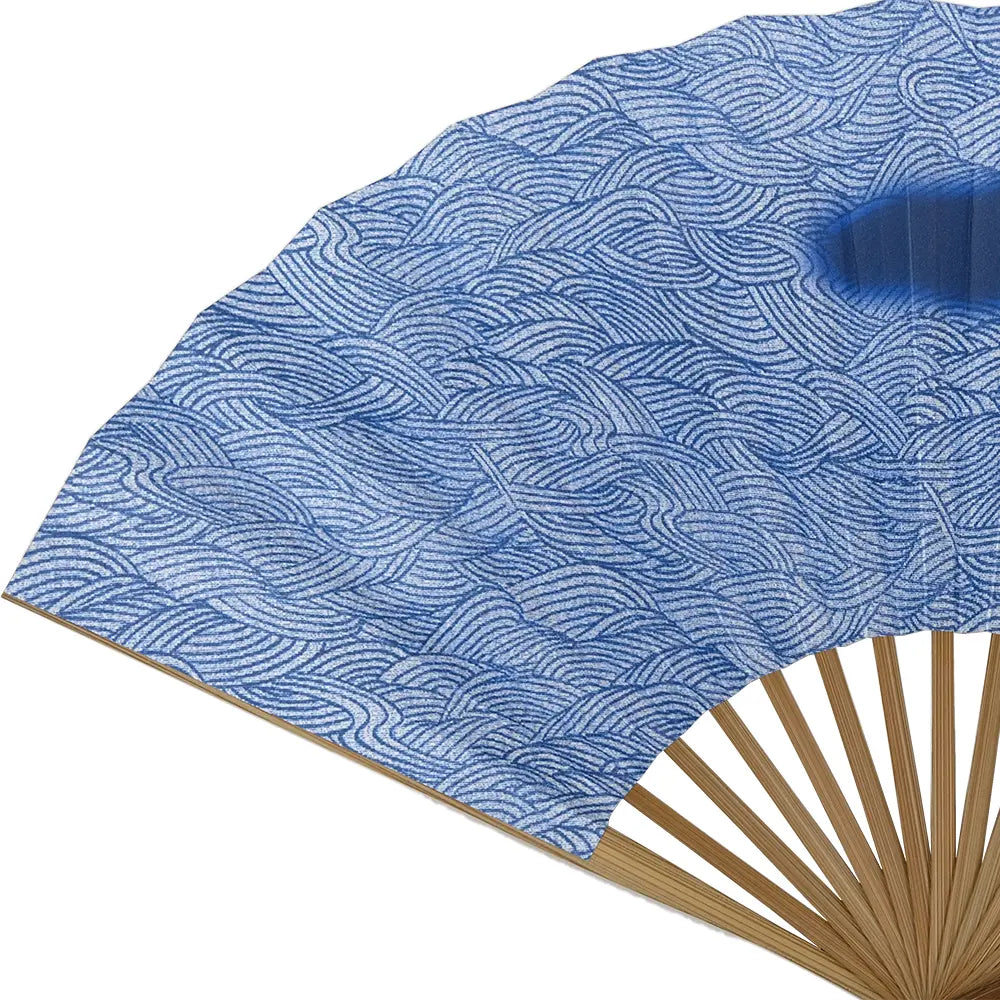
Flowing Water Pattern
The Ryusui pattern depicts flowing water in lines. The meaning of "flowing" is "to cast away evil," or to ward off evil spirits.
Flowing water also represents purity and is used to ward off fire.
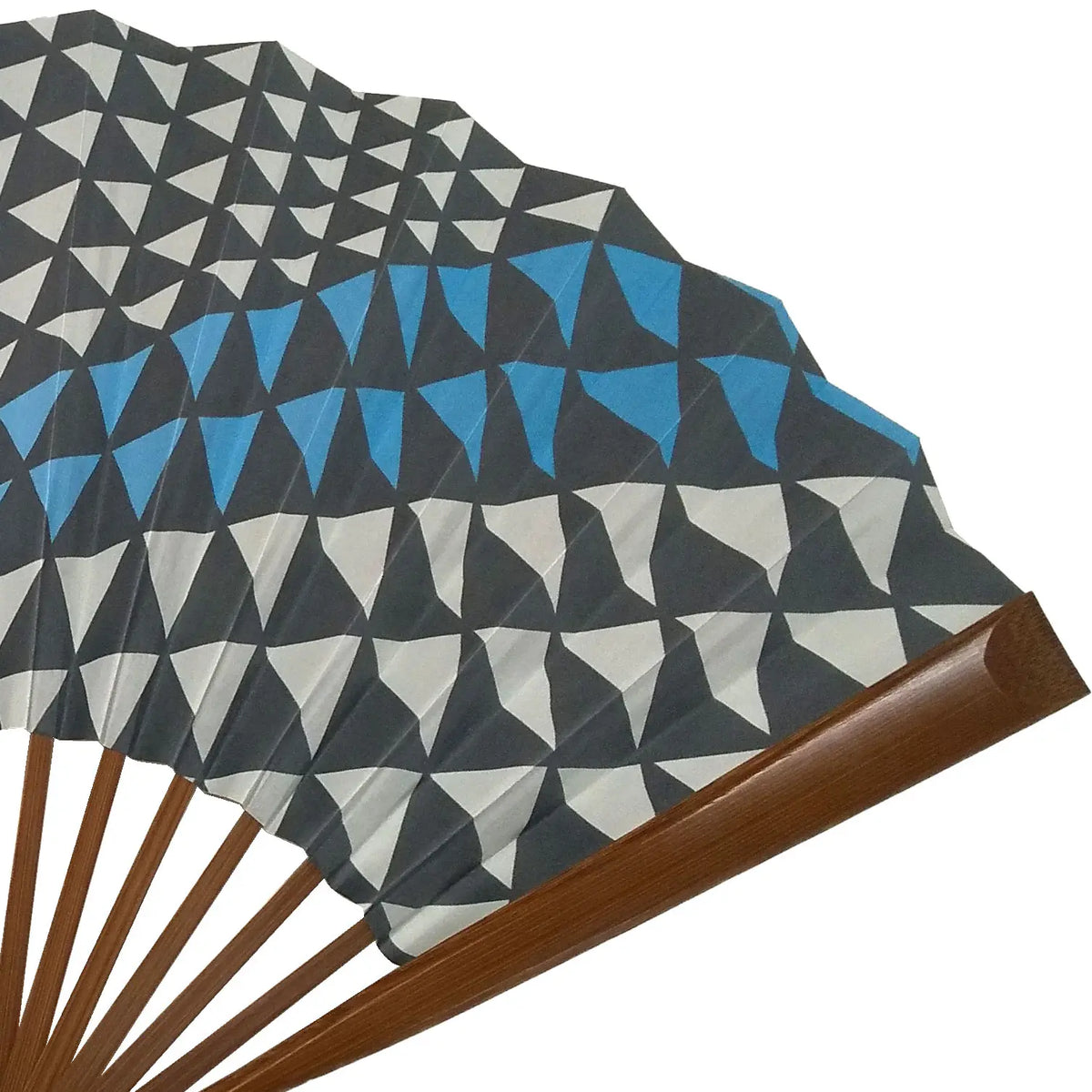
Scale pattern
Scale patterns are reminiscent of snakes and butterflies, which shed their skins to shed their bad luck and "rebirth," and were considered to be a pattern to ward off evil.
In addition, it was believed that triangles had the power to ward off evil, and since scales are used to protect oneself, scale patterns are also used to ward off evil.
Fundo tsunagi
This design is a series of weight weights used on a balance plate.
The weight has an interesting shape with a narrow center, and as a good omen, it was favored as one of the "hozu-zukushi" (treasure-supplying) motifs.
Takarazukushi is one of the auspicious patterns and refers to a collection of treasures.
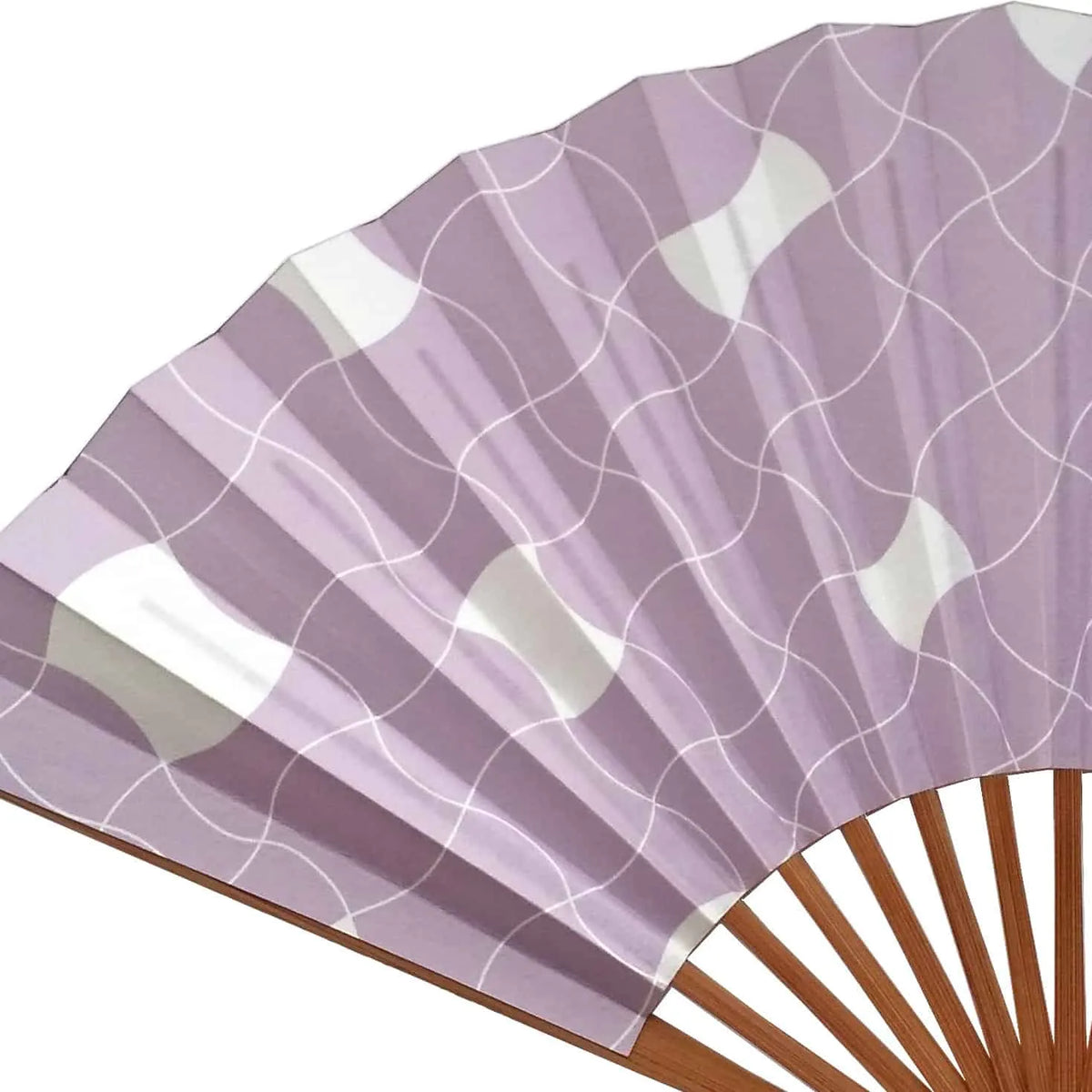
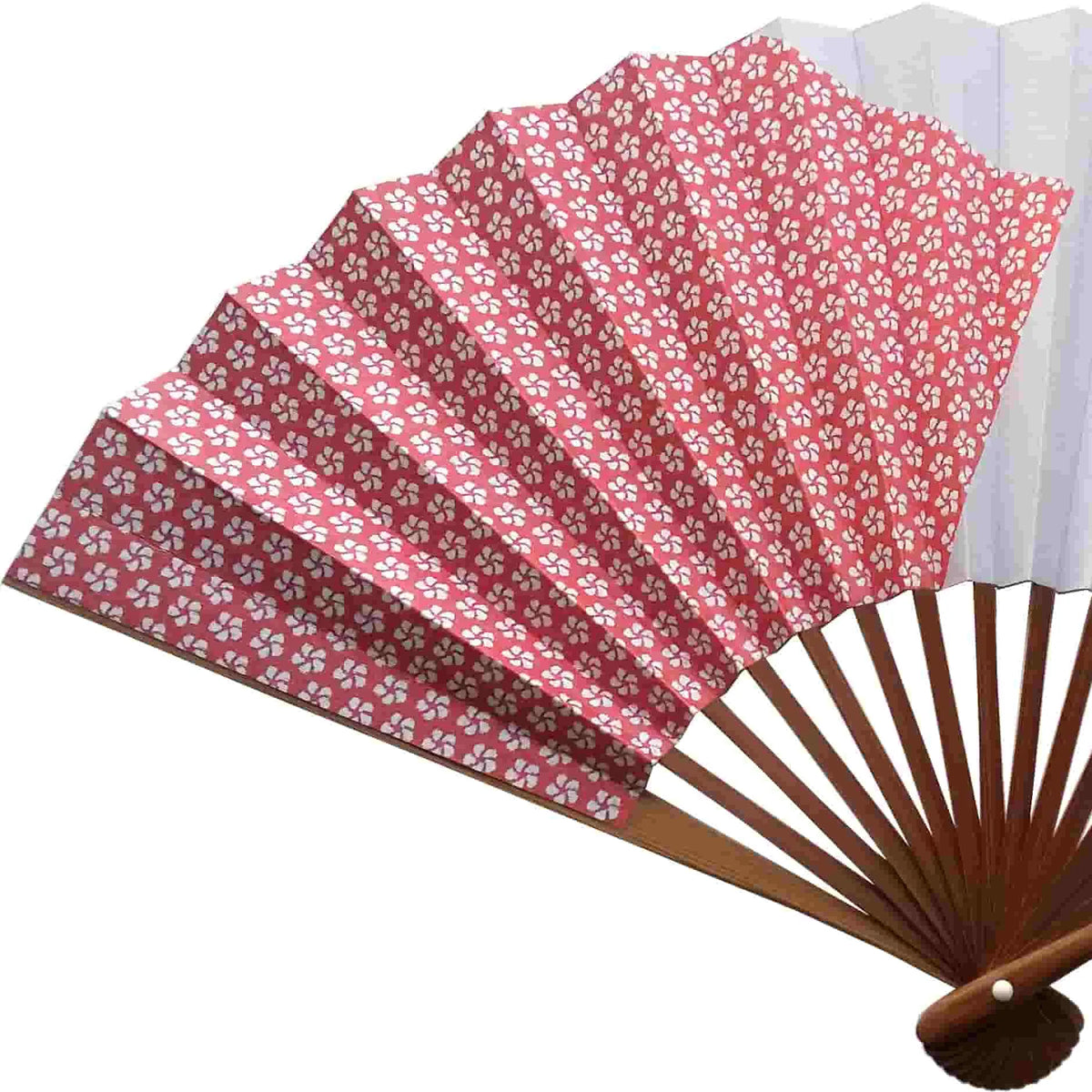
Ume-komon
Ume (Japanese apricot) represents "endurance" over the cold winter and "vitality" that heralds the coming of spring.
It is also considered a symbol of "abundance" since cherry blossom viewing was an event to pray for a good harvest, and of "prosperity of offspring" since many flowers bloom at once.
There are "Kozakura" and "Hananakada" patterns with scattered petals.
